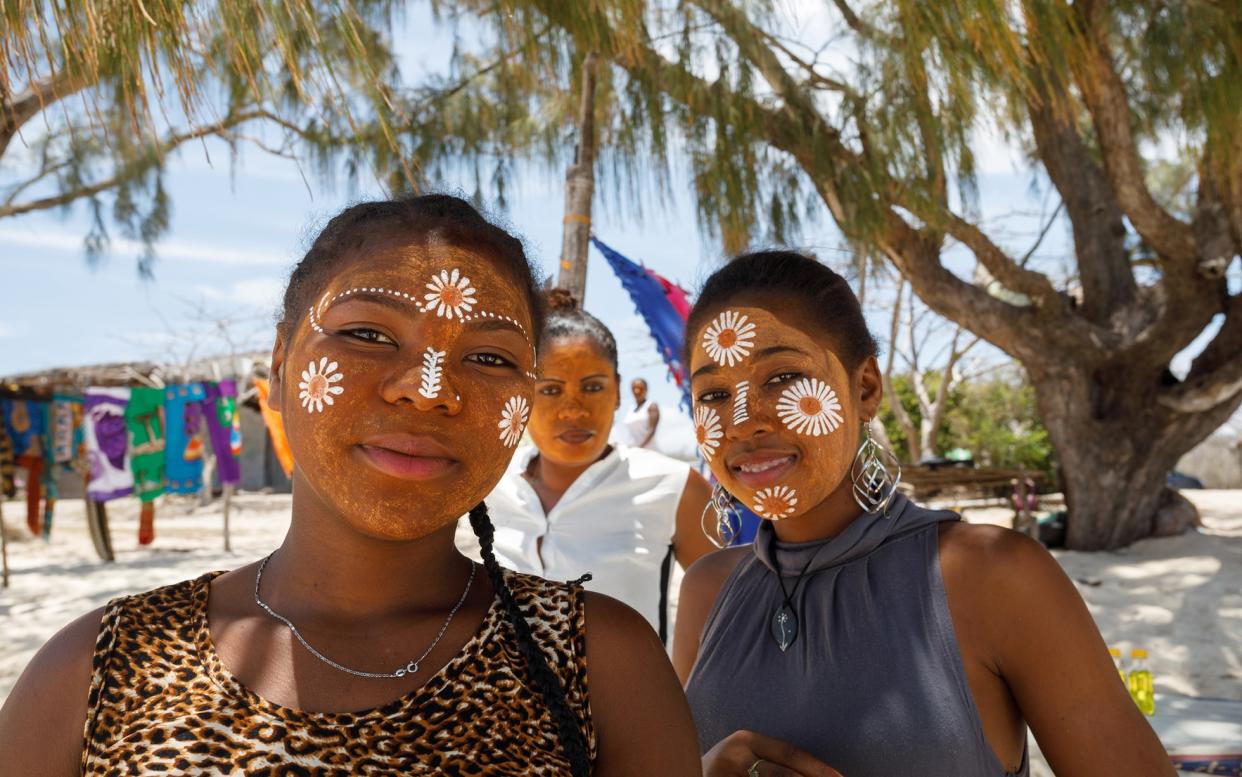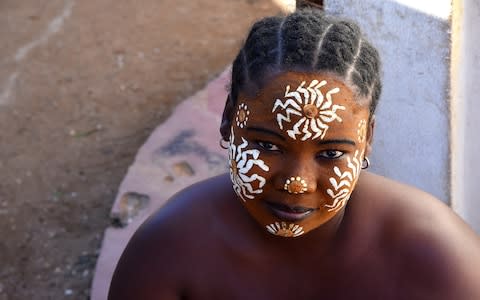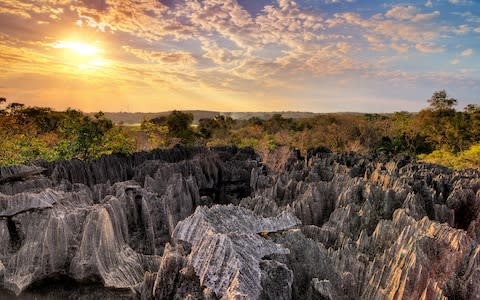‘I felt immersed in a great Victorian adventure’ – my meeting with Madagascar's most intriguing tribe

It’s often said that, of Madagascar’s 18 peoples, the Sakalavas are the most unpredictable – and the most intriguing. I didn’t appreciate this until I heard the women of Begidro, wailing. I’d been sitting with the village ombiasy (sorcerer), happily chatting about charms and cures. The man in the next hut, he said, had been killed by his brother in a dispute over land. Now, the body would be taken to their father’s house, injected with formalin and kept for a few months until a nice tomb could be built.
I asked if anyone had called the police. The sorcerer smiled. No, it was a village matter. The boy would be ordered to pay five cows to his brother’s widow. “And then he must marry her.”
At first I worried that I’d never get anywhere in Sakalava country. It covers most of western Madagascar, which is itself vast (laid across Europe, it would stretch from London to Algiers). During the rains, much of this region is accessible only by sea, and its tracks turn to glue. Although there are 1.2 million Sakalavas scattered across these savannahs, there are no railways or buses and very few towns. Meanwhile, the lands to the south are known simply as Menabe, or “The Big Red”, which says it all.
But I needn’t have worried. With the help of author and expert Derek Schuurman of Rainbow Tours, I soon had a glorious, watery itinerary. During my fortnight in Menabe, I would travel 105 miles by riverboat, then several hundred more in big, semi-amphibious Toyotas down the coast. Along the way there were two national parks, three river crossings (by raft) and a gorgeous succession of grasslands, salt pans and swamps. I’d return home with two spears and a magic amulet, feeling as though I’d been lightly immersed in a great Victorian adventure.
Oddly, the road to Menabe begins in Borneo – or so it seemed. That is because, at heart, the country’s capital, Antananarivo, is still Indonesian. No one knows when they arrived, but it’s generally agreed they were Madagascar’s first settlers, and that, by 1610, they had established this city. For hours, the road west feels Asian, with its rice paddies, foundries and ancestral tombs. But then the hills empty, and there is nothing but grass. This is the efitra, a beautiful buffer zone, empty since the great inter-tribal war of 1821.
Eventually, we passed through a gap and Africa appeared. From here on, everything would be different; the huts, the hats, the braids, and the magnificent gold teeth. A man’s status would now be measured in wives and cattle (there’s even a zebu in the Sakalavas’ flag). Although no one knows precisely how the first Africans arrived, the clue may lie in an old Arabic word: saqaliba, or slave. People would be traded here for more than five centuries, until 1896.

I joined my boat near the market at Anosimena. The things Sakalavas bought surprised me: red trilby hats, blonde wigs and huge silver bangles. Between 1650 and 1750, the Sakalavas were Madagascar’s most powerful tribe and, under the tuition of English pirates, they became adept bandits, regularly raiding the “Asian” Highlands. Menabe was only pacified in 1900, and the bangles are all that remain of its silver dollars.
On the river, a mesmerising landscape was soon sliding by. The Tsiribinha takes a dreamy, unhurried course through the hills and gorges of the western savannahs. Sometimes it was narrow, walled in by steep banks of whistling forest. Elsewhere it seemed as wide as the sky, and was so shallow a boatman would have to dangle off the prow, shouting directions.
There were four crewmen altogether, along with a guide, a chicken and a duck. Most of the time, they all huddled in a little cabin at the back, leaving me with the decks. As their only passenger, I was spoilt silly. The cook, who was very thin (and known as Bobola or “Fatty”) was like a conjurer. Every evening he produced a miraculous feast: salads perhaps, or seafood (or, yes, his feathered friends). Meanwhile, the boatmen would build me a camp on the sandbanks. Then, when it proved too hot for tents, they’d pull it all down and make me a bed, up on the roof.
Life out on the riverbanks was more complex. Most of the time it seemed startlingly lovely; banana groves and luminous strips of rice; bathing pools and waterfalls; stately herons, and great herds rumbling down to the water. Even the crocodiles had a certain charm as – with a lash and smack – they vanished in the shallows. But then we’d see a hillside, the grass all burnt. “Rustlers,” said the guide, Nat, “covering their tracks.”
Rustlers, or dahalo, play an eerie role in Sakalava life. Once, stealing cattle was a rite of passage. Now, however, it’s a business – and the big players have names like “Shotgun” and “Red” and sell their meat to China. In early 2018, there were even a couple of rare incidents with tourists – until the locals stepped in.
“Should we be worried?” I asked. “No,” said Nat. “We often get stopped by dahalo, asking for rice. They don’t want trouble. All they want is cattle.”
With that, life on the river resumed its sleepy hum. Sometimes we’d listen to the lemurs, calling through the forest, and – wherever it was crocodile-free – we’d take a dip. But in the villages people were watchful. Begidro’s sorcerer told me that a zebu was missing, and so the kolony (or militia) were out. We ran into them once, roasting a heron on the banks. They made an incongruous sight, with their football shirts and spears. “But they have powerful charms,” said Nat, “to protect them from bullets.”
I was sorry to be leaving the river. For all its woes, there was magic everywhere, in both the people and the hills. On our last night we were joined on the sandbank by Monsieur Levelo and his eight children. He said they always slept out here, for safety. While he played a home-made banjo, his children danced. Despite the uncertainties of their world, they sang and moved with flawless precision, a perfect synthesis of geometry and music.

After the river, I headed briefly north. It was a memorable foray, deep into the Sakalava heartlands. Often we’d see nothing but thorns and the long red road ahead. Sometimes it was flooded, and tribesmen would rush out to charge us a few pence to drive over their twigs. At Bekopaka, we stopped at a festival of fighting, or moraingy. Even the women were at it, flailing each other in a blur of fists.
Then, after 80 miles, we came to the Tsingy de Bemaraha. To outsiders, this national park is a playground of densely packed natural rock spires. But to the Sakalavas, it’s the holiest place imaginable, and you can still find their tombs, tucked away, inside the caves.
My hotel up here was remarkable. It was the same throughout this trip: five handsome lodges in the middle of nowhere. They all had views and pools, and this one – Soleil du Tsingy – even had sinks made of petrified wood. And who had lugged all that marble out here, and built a terrace for nudists?
For my last few days I headed south, to the coast. During the drive, the forests changed and baobabs appeared, like great fortified towers topped with a limestone tree. The Sakalavas had changed too, and were now called Vezo. Unlike their inland cousins, the Vezo hate violence and are congenitally affable. They are also brilliant navigators and fishermen who live their lives right next to the waves.
The first Vezo I met were nomads, on the beach at Morondava. For them, it’s a perfect city: breezy, loud and slightly raffish. While the ocean is eating up the streets (at the rate of a yard a year), everyone is out having fun. Somehow I stumbled upon a “Miss Menabe” competition, and I remember a policeman looking resplendent in a diamanté pendant. Meanwhile, the Vezo had their entire lives sprawled across the dunes, including pigs, dried barracuda, babies and canoes. To many Malagasies, these outriggers are the key to their story: the boats that brought them here from Borneo.

Another four hours south, the Vezo had one last watery surprise. Cut off from the world by magnificent salt flats and cacti, the villagers of Belo-sur-Mer were still making schooners. The story goes that, in 1870, Napoleon III sent Madagascar two Breton carpenters. From them, the villagers learnt how to slot ships together, and have been building ever since. There are no plans or power tools and yet, every year, up to a dozen are launched off the dunes.
I loved this place, with its pretty sandy inlet and the constant tap of chisels. The Vezo here live the precise lives of shipwrights, their houses and fences neatly woven out of reeds. Better still, beyond this labyrinth of basketry and sails was an endless silvery beach which, most of the time I had all to myself.
After such a fabulous journey, it would have been tempting to retrace my steps. I’d had visions of doing it all backwards, only to emerge bemused and blinking in the present. Instead, I took the daily shuttle, flying Air Madagascar back to “Tana”. But even this was a reminder of the Sakalavas’ splendid isolation. Leaving Morondava, I saw nothing for an hour except vast riverbeds and golden savannah. Then, at last, this great no-man’s-land ended, and Asia reappeared, its lush hills sensibly pocked with little forts.
How to do it
Rainbow Tours (020 3733 6778; rainbowtours.co.uk) offers a 14-day tailor-made tour to Western Madagascar from £3,985 per person based on two people sharing. The price includes international and domestic flights with Air Madagascar, air taxes, private transfers, four-wheel-drive transportation, guides, a Tsiribinha river trip with fully equipped camping and all meals.
Getting there
Air Madagascar (airmadagascar.com) flies four times a week from Paris CDG to Antananarivo. When flying internationally with the airline, you get up to 50 per cent off its domestic flights.
When to go
Boats on the Tsiribinha river operate only in the dry season (April to October). Water levels can get very low by August.


